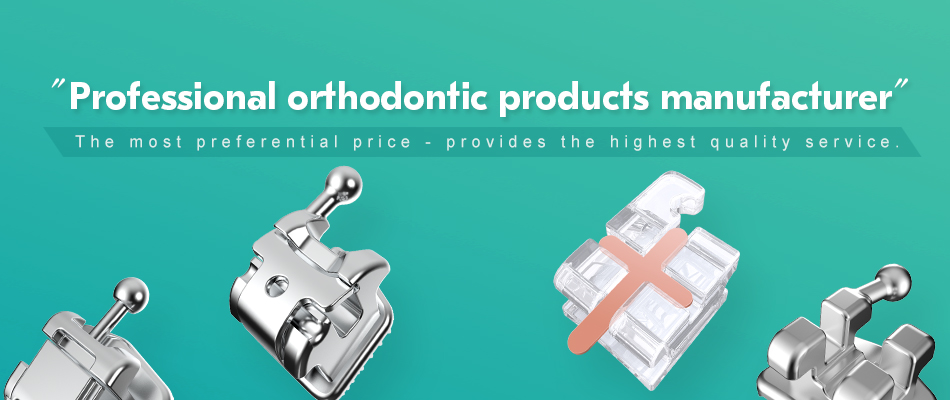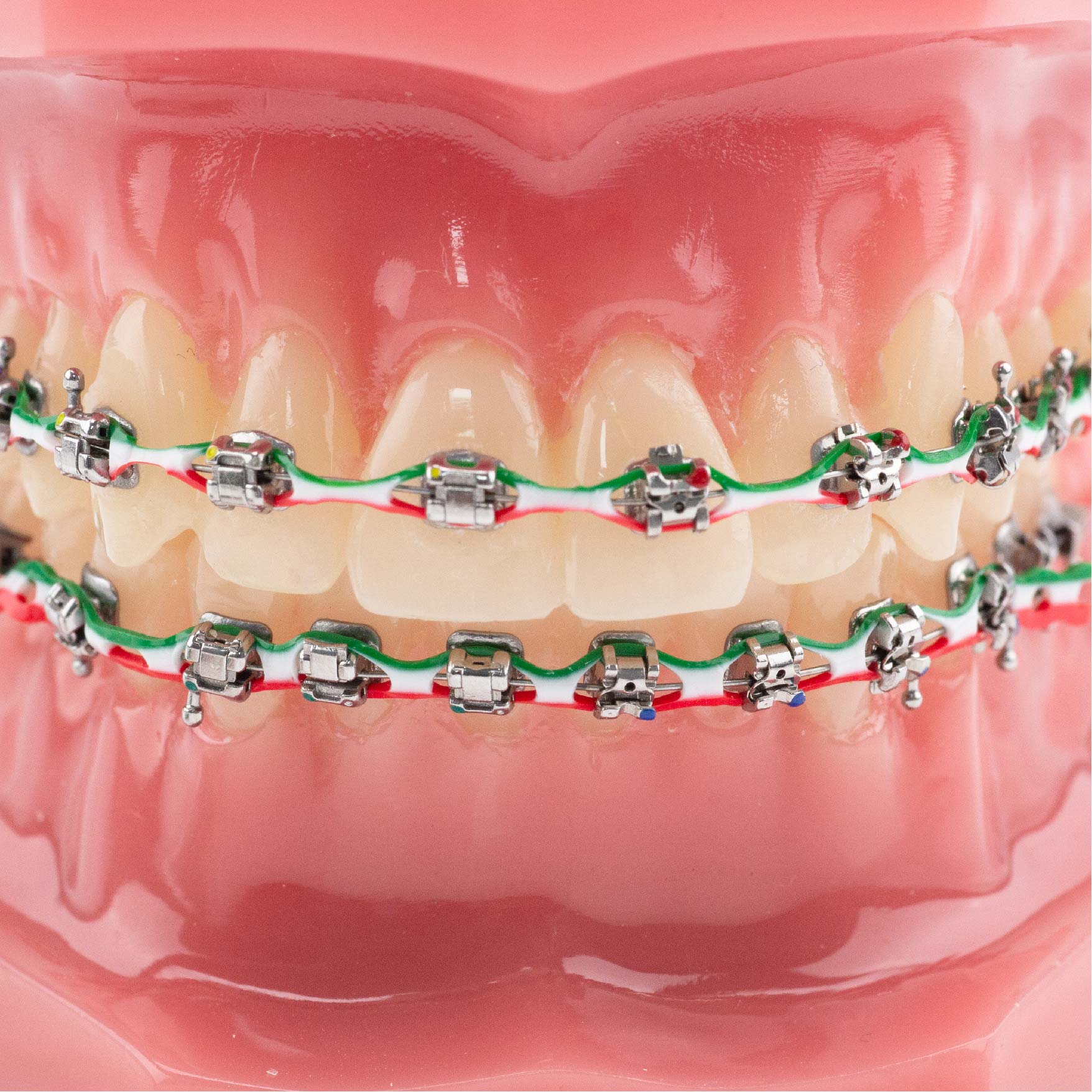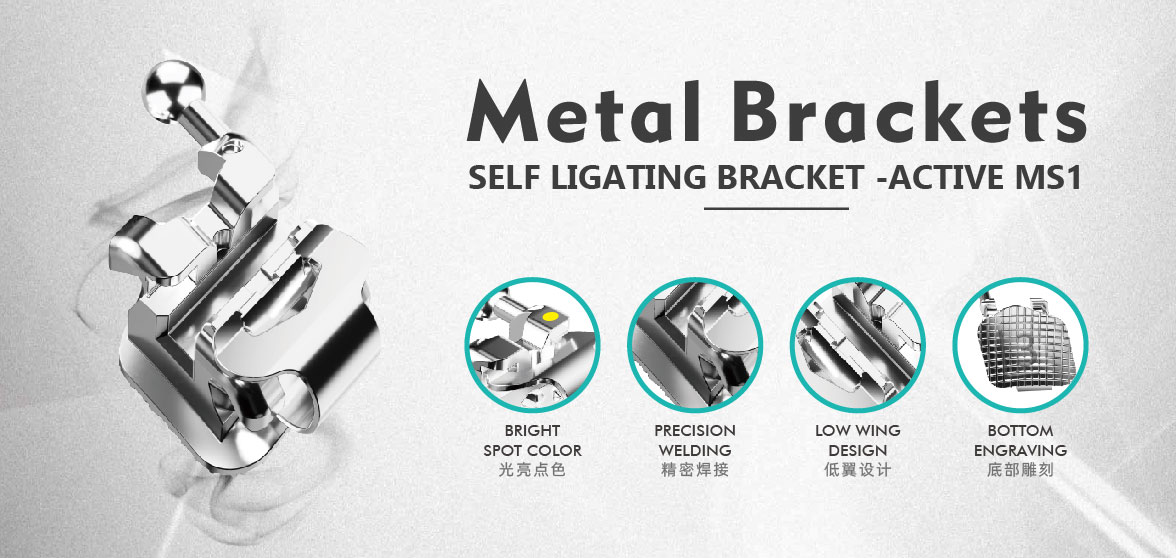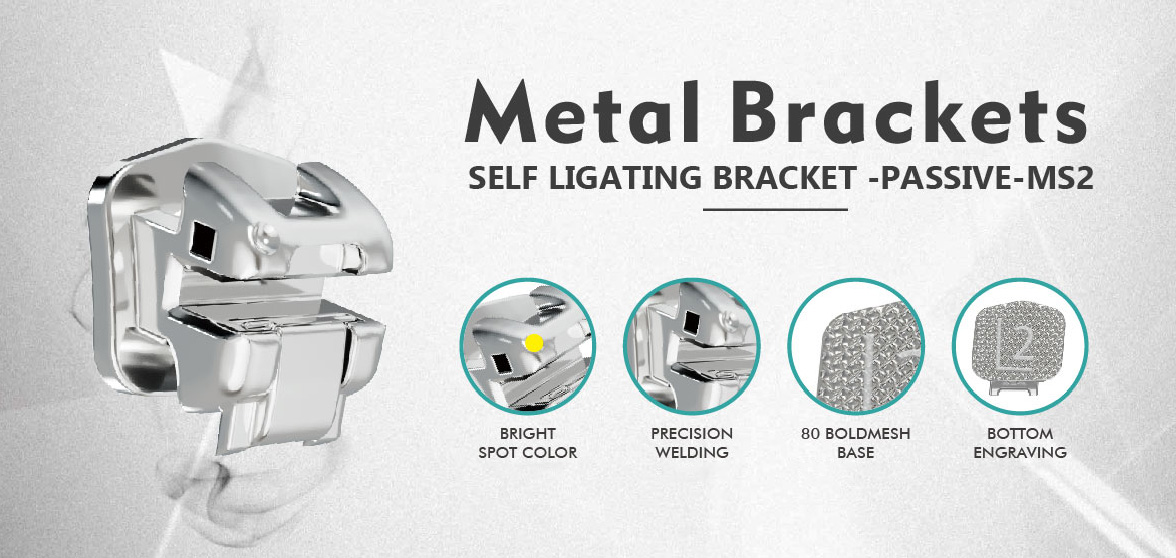Orthodontics has seen remarkable progress with the introduction of Self Ligating Brackets. These advanced braces eliminate the need for elastic ties, offering a smoother and more comfortable experience. You’ll notice improved hygiene and reduced friction, which means fewer visits to the orthodontist. This innovation transforms how teeth are straightened, making it simpler and more effective.
Key Takeaways
- Self Ligating Brackets make braces easier by removing elastic ties. This improves comfort and keeps teeth cleaner.
- These brackets lower friction, helping teeth move faster. They also mean fewer trips to the orthodontist, making treatment quicker.
- You can pick passive or active systems based on your needs. Ask your orthodontist to choose the best one for you.
What Are Self Ligating Brackets?
Definition and Mechanism
Self Ligating Brackets are a modern type of braces designed to straighten teeth more efficiently. Unlike traditional braces, they don’t use elastic bands or ties to hold the archwire in place. Instead, they feature a built-in sliding mechanism or clip that secures the wire. This innovative design reduces friction and allows your teeth to move more freely.
The mechanism works by applying gentle, continuous pressure to guide your teeth into their proper positions. The sliding clip adjusts automatically as your teeth shift, which means fewer visits to the orthodontist for adjustments. You’ll find this approach not only speeds up the treatment process but also makes it more comfortable.
Tip: If you’re looking for braces that simplify the process and improve your experience, Self Ligating Brackets might be the perfect choice.
Types: Passive vs. Active Systems
Self Ligating Brackets come in two main types: passive and active systems. Each type offers unique benefits depending on your orthodontic needs.
- Passive Systems:
Passive brackets have a looser clip or sliding mechanism. This design minimizes friction between the archwire and the bracket, allowing for smoother tooth movement. Passive systems are ideal for the initial stages of treatment when teeth need to move freely and quickly. - Active Systems:
Active brackets, like the Self Ligating Brackets – Active – MS1, feature a tighter clip that applies more pressure to the archwire. This design provides greater control over tooth movement, making it suitable for later stages of treatment when precise adjustments are needed. Active systems are often preferred for complex cases that require more targeted corrections.
| Feature | Passive Systems | Active Systems |
|---|---|---|
| Friction Level | Low | Moderate |
| Tooth Movement Speed | Faster in early stages | Controlled in later stages |
| Ideal Treatment Stage | Initial | Advanced |
Choosing between passive and active systems depends on your orthodontist’s recommendation and your specific treatment goals.
How Do Self Ligating Brackets Compare to Traditional Braces?
Comfort and Reduced Friction
When it comes to comfort, self-ligating brackets stand out. Traditional braces use elastic ties to hold the archwire in place, which can create friction as your teeth move. This friction often leads to discomfort, especially after adjustments. Self-ligating brackets, on the other hand, use a sliding mechanism that allows the archwire to move more freely. This design reduces friction significantly, making the process of tooth movement smoother and less painful.
You’ll also notice that self-ligating brackets apply gentler, continuous pressure to your teeth. This approach minimizes the soreness typically associated with traditional braces. If you’re looking for a more comfortable orthodontic experience, self-ligating brackets are a great option.
Note: Reduced friction not only enhances comfort but also contributes to faster tooth movement, which can shorten your treatment time.
Improved Hygiene Without Elastic Ties
Maintaining good oral hygiene is easier with self-ligating brackets. Traditional braces rely on elastic ties, which can trap food particles and make cleaning around the brackets challenging. This buildup increases the risk of plaque and tooth decay.
Self-ligating brackets eliminate the need for elastic ties. Their open design makes it simpler to brush and floss effectively. You’ll find it easier to keep your teeth and gums healthy throughout your treatment. Orthodontists often recommend self-ligating brackets for patients who want a cleaner and more hygienic option.
Tip: Use an interdental brush or water flosser to clean around your brackets for the best results.
Sleeker Appearance
Self-ligating brackets offer a sleeker and more modern look compared to traditional braces. Their design is smaller and less bulky, which makes them less noticeable on your teeth. This feature appeals to many patients, especially those who feel self-conscious about wearing braces.
Some self-ligating brackets even come in clear or ceramic options, blending in with your natural teeth. If aesthetics are important to you, self-ligating brackets provide a discreet alternative to traditional braces.
Shorter Treatment Time and Fewer Adjustments
One of the biggest advantages of self-ligating brackets is their efficiency. The sliding mechanism allows your teeth to move more freely, which can speed up the overall treatment process. Traditional braces often require frequent adjustments to tighten the elastic ties and maintain pressure on the teeth.
With self-ligating brackets, you’ll need fewer visits to the orthodontist. The brackets automatically adjust as your teeth shift, reducing the need for manual intervention. This feature saves you time and makes the treatment process more convenient.
If you’re looking for a faster and more efficient way to achieve your dream smile, self-ligating brackets are worth considering.
Benefits and Considerations of Self Ligating Brackets
Key Benefits: Efficiency, Comfort, and Hygiene
Self Ligating Brackets offer several advantages that make them a popular choice for orthodontic treatment. Their design allows for smoother and more efficient tooth movement. The built-in sliding mechanism reduces friction, which helps teeth shift faster and with less discomfort. This efficiency often leads to shorter treatment times, saving you both time and effort.
Comfort is another key benefit. These brackets apply gentle, continuous pressure to guide your teeth into place. This approach minimizes the soreness often associated with traditional braces. You’ll likely find the overall experience more pleasant and less stressful.
Hygiene also improves with Self Ligating Brackets. Without elastic ties, cleaning around the brackets becomes easier. Food particles and plaque have fewer places to hide, reducing the risk of cavities and gum issues. Maintaining good oral health during treatment becomes much simpler.
Tip: Regular brushing and flossing will help you maximize these hygiene benefits.
Potential Risks: Cost and Suitability for Complex Cases
While Self Ligating Brackets provide many benefits, they may not suit every situation. The cost can be higher compared to traditional braces. This price difference reflects the advanced technology and materials used. However, many patients find the added comfort and efficiency worth the investment.
For complex orthodontic cases, these brackets might not always be the best option. Some situations require additional tools or techniques that traditional braces handle better. Your orthodontist will evaluate your specific needs to determine the most effective treatment plan.
Note: Always consult your orthodontist to understand whether Self Ligating Brackets are the right choice for your smile goals.
Why Self Ligating Brackets Are Essential in Modern Orthodontics
Advancing Orthodontic Efficiency
Self Ligating Brackets have revolutionized orthodontic treatment by making it faster and more effective. Their innovative sliding mechanism reduces friction, allowing teeth to move more freely. This design eliminates the need for frequent adjustments, saving you time and effort. Orthodontists can focus on achieving precise results without the delays caused by traditional braces.
The brackets also apply consistent pressure to your teeth, which speeds up the alignment process. This efficiency means you can achieve your desired smile in a shorter timeframe. If you value a streamlined treatment experience, these brackets are an excellent choice.
Enhancing Patient Satisfaction
Your comfort and satisfaction are priorities in modern orthodontics. Self Ligating Brackets provide a smoother and less painful experience compared to traditional braces. The absence of elastic ties reduces irritation inside your mouth, making the treatment more pleasant.
You’ll also appreciate the convenience of fewer orthodontic visits. With these brackets, adjustments are less frequent, giving you more time to focus on your daily activities. Their sleek design and smaller size improve aesthetics, helping you feel more confident during treatment.
Tip: If you want a comfortable and hassle-free orthodontic journey, consider discussing these brackets with your orthodontist.
Supporting Trends in Minimally Invasive Dentistry
Minimally invasive dentistry focuses on achieving results with the least disruption to your oral health. Self Ligating Brackets align perfectly with this trend. Their design reduces the need for additional tools or procedures, making the treatment less invasive.
The brackets also promote better oral hygiene. Without elastic ties, cleaning around the brackets becomes easier, reducing the risk of cavities and gum issues. This focus on preserving your oral health aligns with the goals of modern dentistry.
By choosing these brackets, you’re opting for a treatment that respects your comfort and health while delivering excellent results.
Self Ligating Brackets have reshaped orthodontic care. You benefit from shorter treatment times, improved comfort, and better hygiene. These brackets simplify the process while delivering effective results. As orthodontic technology advances, they remain essential for achieving optimal outcomes and enhancing your orthodontic experience.
FAQ
What makes self-ligating brackets different from traditional braces?
Self-ligating brackets use a sliding mechanism instead of elastic ties. This design reduces friction, improves comfort, and simplifies cleaning, making them a modern alternative to traditional braces.
Are self-ligating brackets suitable for everyone?
Most orthodontic cases can benefit from self-ligating brackets. However, your orthodontist will evaluate your specific needs to determine if they are the best option for you.
How do self-ligating brackets improve oral hygiene?
Without elastic ties, self-ligating brackets reduce areas where food and plaque can accumulate. This design makes brushing and flossing easier, helping you maintain better oral health during treatment.
Tip: Use a water flosser for thorough cleaning around your brackets!
Post time: Jun-02-2025





